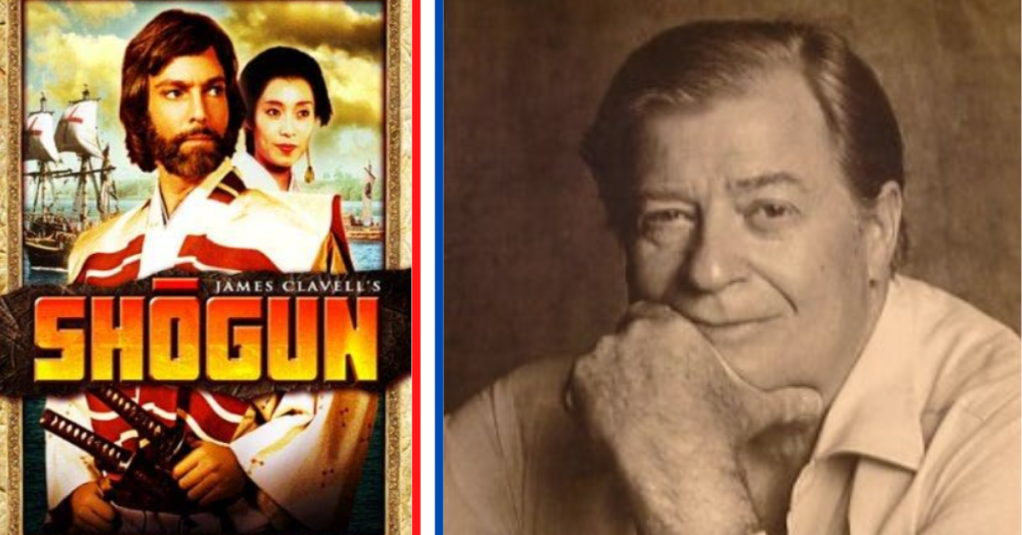James Clavell is most known for his seminal work, Shogun, yet he worked in many other capacities in entertainment such as screenwriter (21 produced scripts), director (10 projects directed) and producer (11 producer credits). His novel was published in 1975 and by 1980 had been made into a highly successful and groundbreaking TV series of the same name. The show had a cast of top-level American and Japanese actors such as Richard Chamberlain, Toshiro Mifune and Yoko Shimada. The limited series won numerous awards and made Clavell a household name. A new version of Shogun will appear this year on FX. In light of all of his successes, Clavell’s military experiences may have played a significant role in his author and writing of Shogun.

Clavelle was the son of a Royal Navy officer, Commander Richard Clavell. He grew up in England with his father being stationed around the globe including Australia. Clavell himself later served in the Royal Artillery during World War II. He joined in 1940 and was sent to fight in the Pacific in 1941. He initially served in Singapore to fight against the Japanese, but the ship he was on while in transit was sunk. He and his fellow survivors were rescued by a Dutch boat that was escaping to India. In 1942, after being shot in the face, he was captured in Java and sent to a Japanese POW camp on the island country.
Clavell used the prison not as a place of internment but as his university. People of all backgrounds and educations were imprisoned there, so he learned from experts in everything from physics to counterfeiting. He also learned the art of survival, which he deemed, “…the most important course of all.” He believed that if the two atomic bombs had not been dropped on Hiroshima and Nagasaki he would have died during the war. Clavell did not talk much about his wartime experience for some time after his return.

Clavell suffered psychologically and emotionally from the effects of being a POW. He left the service as a Captain after the war in the mid-1940s because a motorcycle accident ended his military career. Clavell initially tried to produce in the 1950s with little success. He then moved to NYC while writing screenplays and worked as a carpenter during the period. He finally sold a script to RKO about pilots called Far Alert in the mid-1950s. His pilot was not filmed but kept getting sold and resold which brought in $87,000 in 18 months. Clavell’s script got the attention of Robert L. Lippert, a film producer who hired him to write the 1958 version of The Fly. The movie was a hit and spawned a couple of sequels and a remake in 1986 with Jeff Goldblum.

He wrote a couple more films of note including Watusi and Five Gates to Hell, which he also directed. He also wrote, directed and produced a western Walk Like a Dragon with Jack Lord, of Hawaii 5-0 fame. Most notably, Clavell wrote The Great Escape, which was directed by John Sturges and starred many top actors such as Steve McQueen, James Garner, Richard Attenborough, Charles Bronson, James Coburn and Donald Pleasance. It was based on a true story of a real World War II POW in Europe. The movie was a big hit and helped to further launch fellow veteran (Marine) Steve McQueen’s career. The movie’s success further put Clavell in demand as a screenwriter and director.

His next big hit was writing, directing and producing To Sir, With Love which stars Sidney Poitier. The film was a commercial and critical success. This firmly established Clavell’s career and further supported Sidney Poitier’s rise as a star. The movie was based on the semi-autobiographical book of the same name. He did a few more films, none with the same success as To Sir, With Love and returned to his novel writing with Shogun.

Shogun was loosely based on William Adams’s real life as an English navigator who was the first man to come to Japan in 1600. Adams rose to be a shogun in real life. The book sold 15 million copies worldwide and was a big success. The novel follows John Blackthorne who becomes a samurai in feudal Japan. The book was the first (internal chronologically) in his Asian Saga, which, beginning with the first published in chronology, includes King Rat, Tai-Pan, Shogun, Noble House, Whirlwind and Gai-Jin.

The first novel was published in 1962 and the last one in 1993. The books mostly had a historical element intertwined into the plot line which added the depth of realism. King Rat was adapted into a film in 1965. Tai Pan was turned into a feature in 1986. Noble House was adapted into a miniseries with Pierce Brosnan in 1986. His last publication was Gai-Jin and was a bestseller before his passing in 1994.


